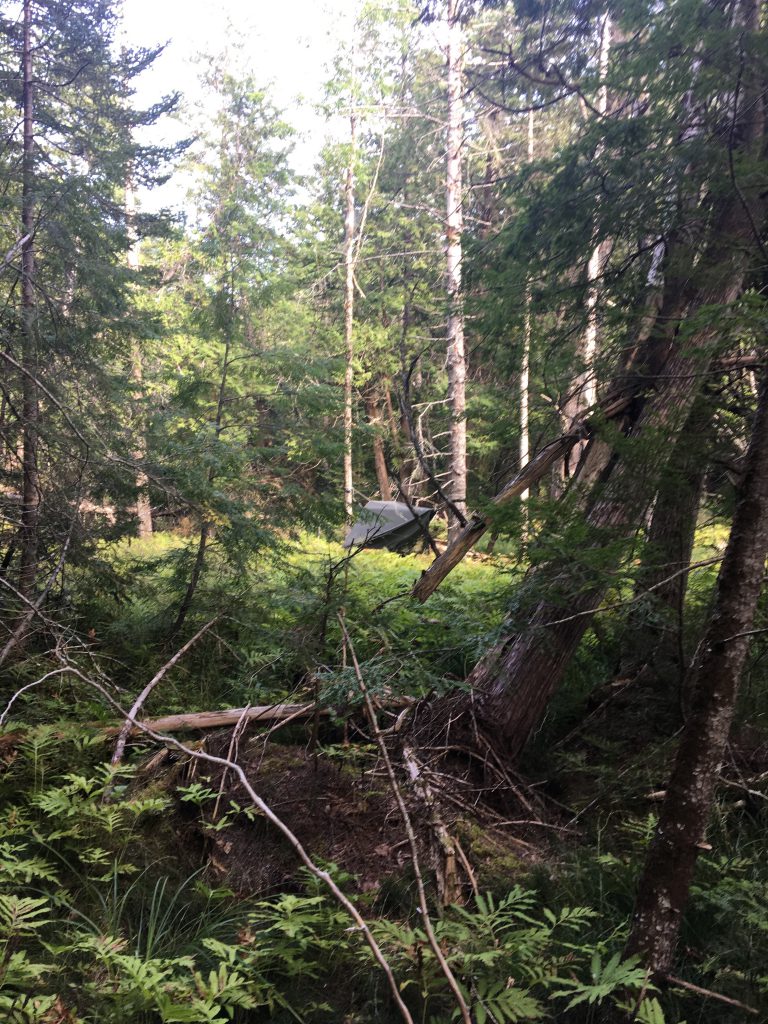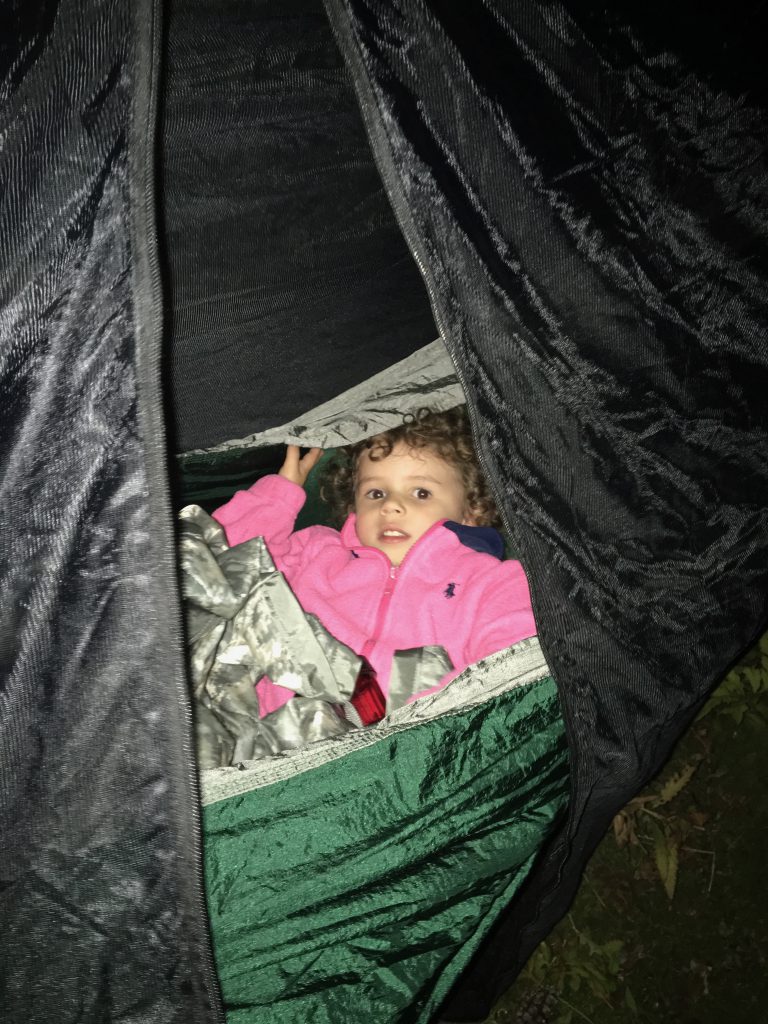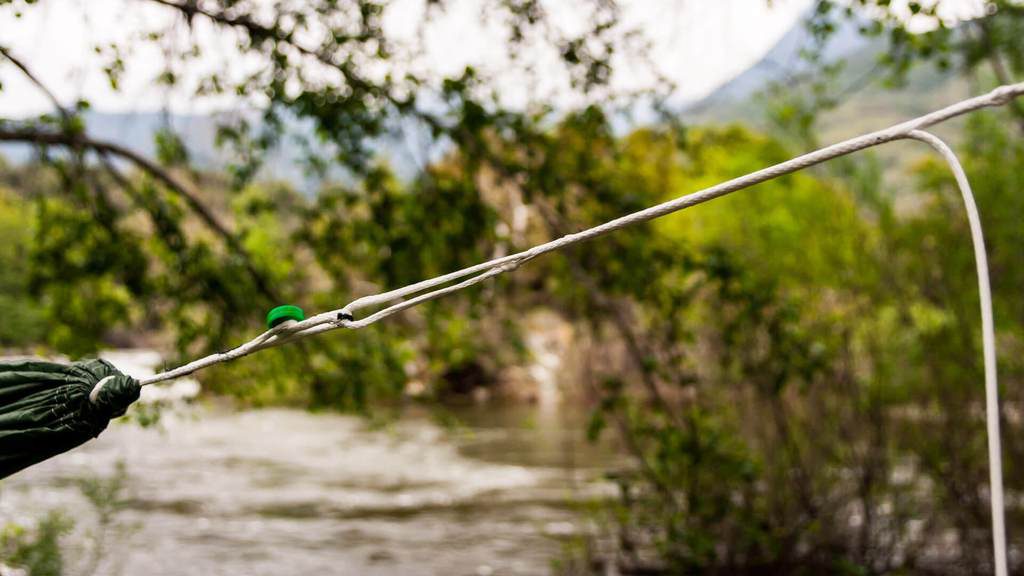After my go-to camping mattress deflated on a cold, winter night in a shelter in the Adirondacks, I was ready for a change.
It was a long circuit around and up the Seward Range. I prefer tents to shelters for a variety of reasons, not the least of which is to try and mitigate airflow around me when I sleep. I’m a warm sleeper to begin with, so I like to go lean as possible on my cold weather stuff for the sake of weight. It’s a delicate balance, and any disruption can lead to a night of shivering for me.
I couldn’t find a flat spot, though, that wasn’t saturated in a cold, early spring rain, and into the shelter I went. A side sleeper generally, the mattress deflation made a bad situation worse.
Later, I got a couple of deals on lightweight, nylon camping hammocks, and after setting one up in a copse of trees on our 12-acre property, I was hooked. Crawling into it on a Maine summer afternoon (outside of black fly season), I fell asleep as quickly as I seem to fall asleep in the living room after 8pm. And unlike with my usual tent and mattress combination, I woke up without my 40+ body swearing at me in Yiddish.
We’re blessed on our property that I have a trail system and some great places to experiment overnight with new gear without catastrophic failure.

I didn’t make a huge investment. I got a couple of deals on single and double hammocks, along with a lightweight bugnet, and I used the tarp from my National Guard issued gear. My toddler, Nezzie, crawled in me for the night. We were very comfortable, until the Maine chill set in.

I’ve long known about the need for an underquilt, so in the pinch, I used my military issue poncho liner, to great effect.
And that was that, I’ve decided that for my future adventures, a hammock is the way to go. And it’s worked out since.
Staying Warm: Pad or Quilt
One of the biggest problems is that your points of contact with the hammock have naught but a thin layer of fabric between you and the outside world, and the outside world is here to freeze your parts.
There are those that say you can get away with a pad, and this will work. For me, a simple foam pad with cuts taped along the side to wrap the width of the hammock helped. However, it limited me to sleeping parallel with the lines of the hammock, when diagonally might have helped my back a little more on a tough night.
The better option seems to be a quilt. I’m not listing brands here today, but I can say, you can get lightweight options without spending a ton of money. Look for products with decent reviews on Amazon. People that tell you to spend a small fortune are often correct: you get what you pay for. Still, we have options with online shopping that we didn’t have in the past, and if you look for the right keywords in reviews, you won’t be disappointed, unless you’re a serious ounce counter.
What I like about the quilt is that it fully stops the breeze and suffers me some more sleeping options. In the middling seasons, I can still get away with a lightweight fleece throw in addition to a 30 or 40 degree underquilt. Experiences will very. Best to experiment.
Hanging: Whoopie Slings or Daisy Chains

My hammocks have daisy chains, which have incremental places in either the webbing or the rope where I can place my carabiners in order to increase my hammock’s hanging tension.
The whoopie sling is a lot more adjustable, and is sometimes lighter than the daisy chain option. The whoopie sling gives you an option for more refinement in your hang situation, and you need not break your bank buying them.
The only thing I do discourage is using bark-damaging ropes for your hang. Do the right thing, buy or make straps that don’t eat into the trees you’re using.
Bug Nets
You could sleep with bug spray on you, or you can buy a bug net. Here in Maine, the black flies usually bite first and then think about the bug spray later, and even just the presence of a swarm is itself obnoxious.
Again, you can find lightweight options without breaking the bank, or you can go all out with a combination hammock. I do like having mine non-integral to my hammock, because there are plenty of nights when I just haven’t needed it.
Conclusion
I like hammocks. The tarp/fly, bug net, underquilt, and straps will more than likely come in under the cost of tentage, if not in money, but also possibly in weight. And one thing I don’t struggle with on long thru-hikes is having a comfortable place to recline after a long day’s hike. It’s so eminently practical and comfortable.
One thing that is difficult to overcome is the illusion of safety that comes with sleeping within the walls of a tent. These are fabric walls, people, not a structure fortified with sandbags. When I was stationed in Alaska, a wildlife photographer was pulled out of his tent and mauled/eaten to death. There is really not much of a security advantage in sleeping in a tent, on the ground.
And if you’ve ever been woken up by a floating sensation, as I often have with tent camping, there’s a realization that there’s a dryness factor to hammock camping you may not have with a tent. And one thing I love a good deal is that if your fly is the last thing to come down in the morning when breaking camp, you can be reasonably sure that your gear can stay a smidge more dry than it would have otherwise.
